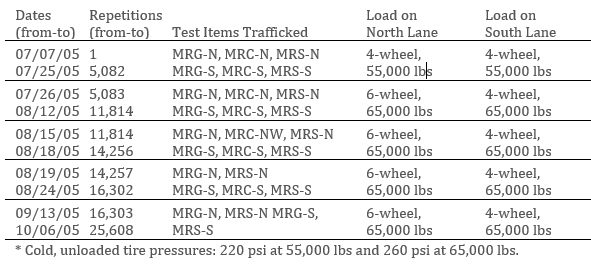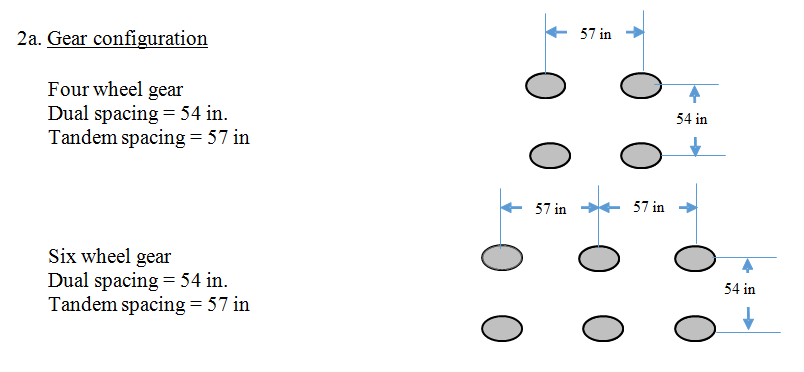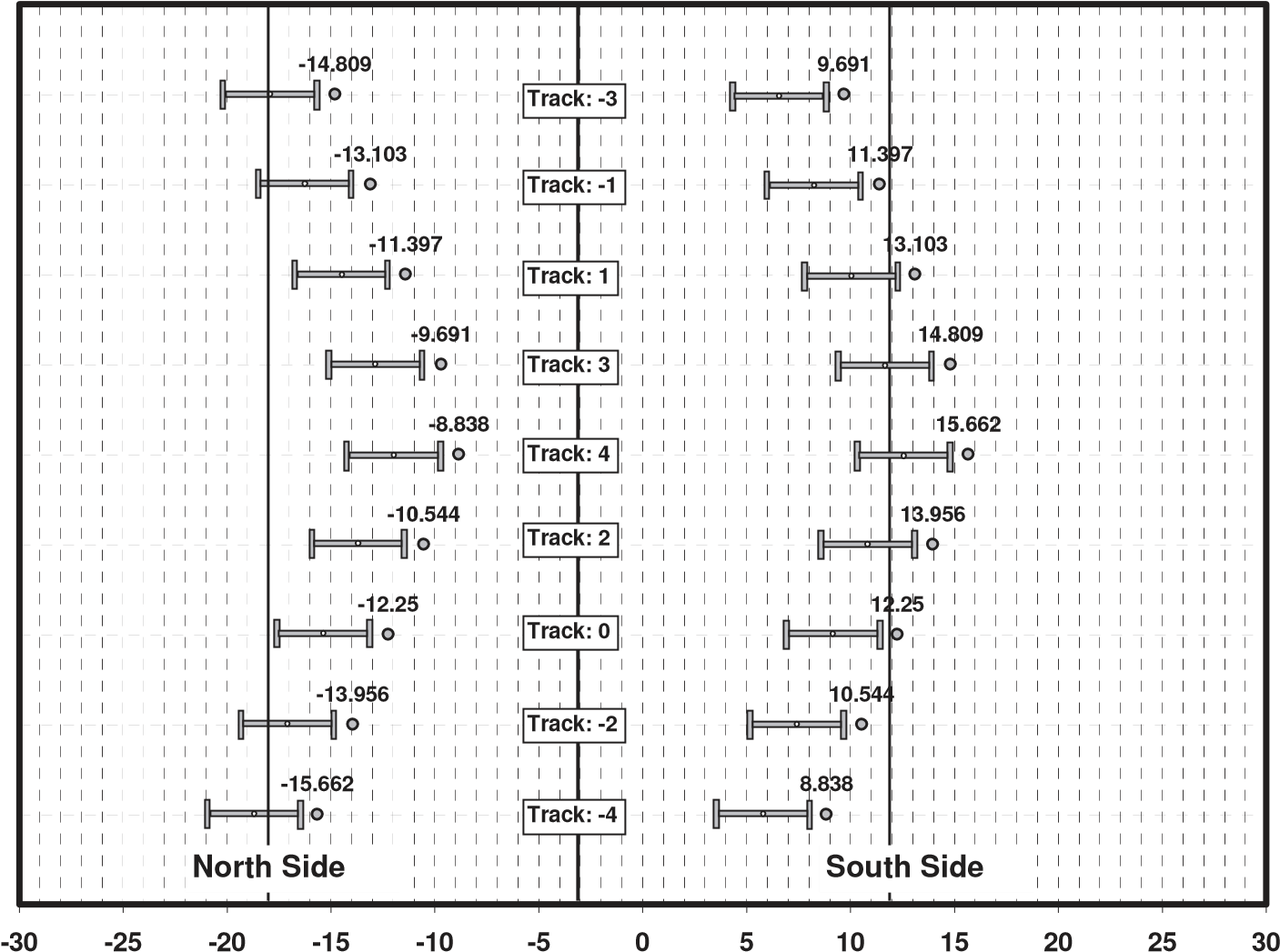Rubblizing of concrete pavements is a relatively new
technique and full-scale trafficking of rubblized airport pavements under heavy
airplane loading had not been conducted previously. Design procedures for
determining the required thickness of asphalt overlays on rubblized pavements
have therefore not been developed in the traditional sense. The most usual
assumption (see, for example, FAA EB66) is that the rubblized and overlaid
pavement behaves like a flexible pavement and that the overlay thickness can be
determined by assigning an equivalent thickness or modulus value to the
rubblized layer and applying this in a standard flexible pavement design procedure.
In view of the unsubstantiated nature of thickness design for rubblized
pavements it was decided to start testing at an arbitrary loading condition and
to adjust the loading according to the observed behavior under traffic.
Only four wheels were available for loading on the
unrubblized traffic lane, so traffic was begun with a four-wheel dual-tandem
configuration on both traffic lanes. The geometry was the same on both traffic
lanes, with dual spacing of 54 inches (137.2 cm) and tandem spacing of 57 inches
(144.8 cm). Wheel load was set at 55,000 lbs (25 tonnes) because this was the
load applied to the new construction CC2 test items and, although badly cracked
at the end of trafficking, all of the test items were capable of structurally
supporting the loads applied up to the end of trafficking. Adding five inches
of asphalt implied that the unrubblized pavement would be capable of
structurally supporting considerably more traffic at the same load.
Calculations of the predicted life of the rubblized pavements
using the assumptions of flexible pavement response and characteristics
indicated that, for the initial traffic loading case, the structure on-grade
(MRG) might fail fairly quickly (a few hundreds or thousands of repetitions)
but that the structure on stabilized base would probably last for many tens of
thousands of repetitions.
Loading Parameters and Gear Configuration
Trafficking started on July 7, 2005, and continued until
October 6, 2005, following the schedule in Table 1. (The loading was increased
after 5,082 repetitions because none of the pavements showed any significant
deterioration at that traffic level.) The standard NAPTF 66-repetitions per
cycle wander pattern was used on both traffic lanes. The temperature of the
asphalt varied between 66 and 85 degrees F (19 And 29 degrees C) during the
period of testing. The average temperature of the asphalt was about 78 degrees
F (26 degrees C).


Wander Pattern
Standard wander
pattern was used in CC2 Phase V for aircraft trafficking. Wander pattern
coordinates can be downloaded
here.
